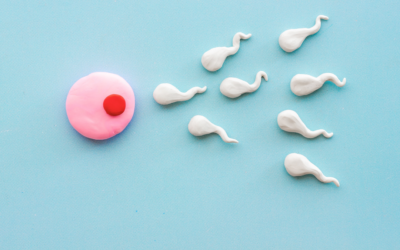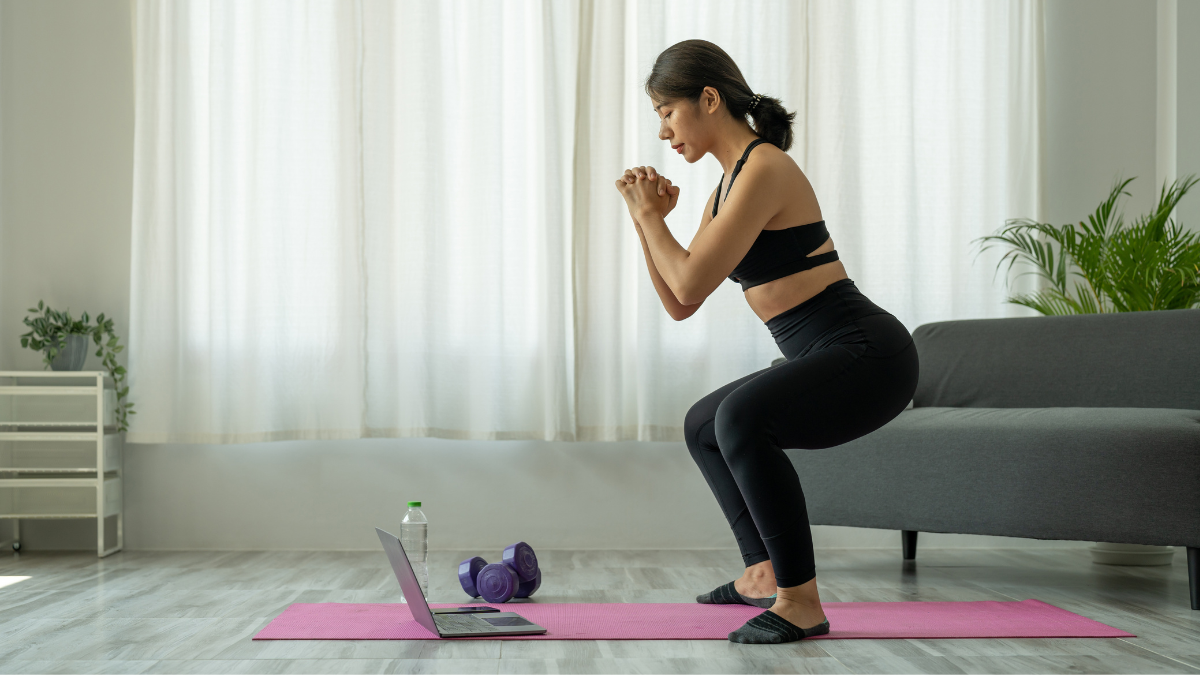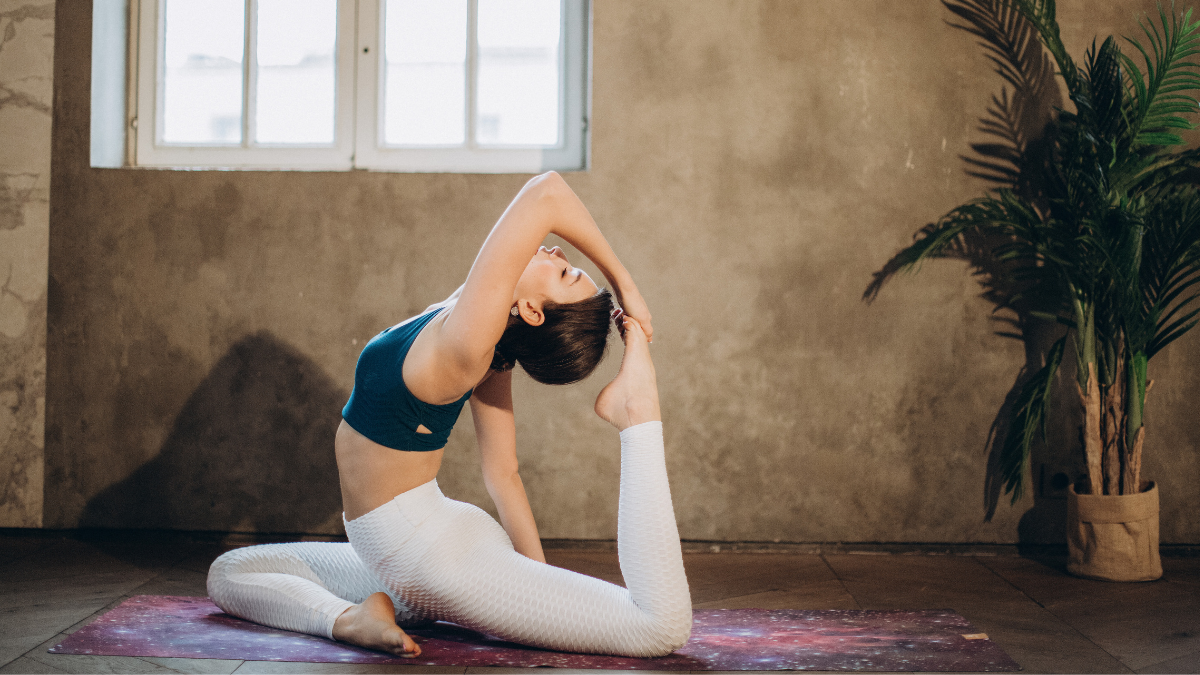Your body has just done something incredible—bringing new life into the world. But now, as a new mom, you might be wondering how to gently rebuild your strength, regain energy, and feel good in your body again. That’s where a well-planned postpartum workout routine comes in.
Postpartum workouts aren’t about intense sweat sessions or bouncing back quickly. They’re about healing, reconnecting with your core and pelvic floor, and slowly building strength from the inside out. Whether you had a vaginal birth or a C-section, these gentle movements can help you recover safely and confidently.
In this post, you’ll discover 15 of the best postpartum workouts that are perfect for beginners. You don’t need fancy equipment or hours of free time—just a few minutes a day and a willingness to take care of yourself, one small step at a time. Let’s begin!
Table of Contents
What is a Postpartum Workout?
A postpartum workout is a gentle, specially designed fitness routine meant to help new moms recover safely after childbirth. Unlike regular exercise plans, postpartum workouts focus on healing the body, especially the core and pelvic floor, rebuilding strength, and improving energy levels—without pushing too hard or too fast.
Your body goes through incredible changes during pregnancy and labor. So instead of “bouncing back,” postpartum workouts are about moving forward—with patience, support, and self-love.

Key Features of a Postpartum Workout:
- Low-impact, safe movements
- Focus on the pelvic floor and deep core
- Helps ease back pain, improve posture, and restore muscle tone
- Can start as early as 2–6 weeks (with medical approval)
- Includes activities like walking, pelvic tilts, Kegels, stretching, and light strength exercises
Why Postpartum Workouts Matter
After giving birth, your body needs time, love, and gentle care. A well-planned postpartum workouts routine can play a powerful role in your recovery—physically, mentally, and emotionally. It’s not about “snapping back” to your pre-baby body. It’s about rebuilding strength, restoring balance, and helping you feel like you again.
Let’s break down why postpartum workouts truly matter for every new mom:
✅ 1. Strengthen Core and Pelvic Floor Muscles
Pregnancy and delivery (vaginal or C-section) stretch and weaken your core and pelvic floor. Without rebuilding these muscles, you might face:
- Back pain
- Poor posture
- Urinary incontinence
- Pelvic organ prolapse
Postpartum exercises like pelvic tilts, Kegels, and bridges gently restore core strength and support long-term pelvic health.
✅ 2. Improve Posture and Alignment
Feeding, carrying, and rocking a baby all day can strain your back, shoulders, and neck. Postpartum workouts realign your body, improve posture, and reduce tension from daily mom duties.
✅ 3. Boost Energy and Fight Fatigue
Though it sounds counterintuitive, moving your body—even just a little—can actually boost your energy. Gentle walks, light stretching, and deep breathing increase blood flow and help you feel more awake and alive.
✅ 4. Help Prevent or Ease Postpartum Depression
Exercise releases endorphins—your brain’s feel-good chemicals. Regular movement, even 10 minutes a day, can reduce stress, lift your mood, and help you feel more emotionally balanced.
✅ 5. Aid Gradual and Healthy Weight Loss
Your body will lose weight at its own pace. Postpartum workouts encourage healthy, slow fat loss while preserving lean muscle. It’s not about crash dieting—it’s about feeling strong and capable in your skin.
✅ 6. Rebuild Muscle Tone and Strength
Muscles in your legs, arms, and glutes may have weakened during pregnancy. Targeted postpartum exercises help tone these areas safely, improving strength and making daily tasks easier (like carrying your baby or lifting a stroller).
✅ 7. Improve Sleep Quality
While sleeping with a newborn can be unpredictable, regular movement helps your body fall asleep faster and stay asleep longer when you do get a chance to rest.
✅ 8. Encourage Mind-Body Connection
Pregnancy may leave you feeling disconnected from your body. A postpartum workout routine helps you tune in again—feeling more aware, present, and grounded in your new postpartum body.
✅ 9. Reduce Aches, Pains, and Stiffness
Postpartum tension is real—from sore wrists to stiff backs. A gentle workout routine improves circulation and mobility, easing common aches caused by breastfeeding, babywearing, or hours of sitting.
✅ 10. Build Confidence and Self-Love
Every step you take in your postpartum journey is worth celebrating. Moving your body with love (not pressure) can help you feel stronger, more confident, and proud of everything your body has accomplished.
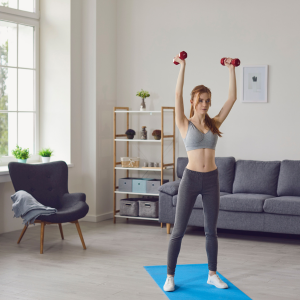
When to Start Your Postpartum Workouts
One of the most common questions new moms ask is: “When can I safely start exercising after giving birth?” The answer depends on a few important factors—like the type of delivery you had, how your body is healing, and what your doctor recommends.
🩺 General Guidelines Based on Delivery Type:
Vaginal Birth:
- If you had an uncomplicated vaginal delivery, you can usually begin light movement like walking, pelvic floor exercises, and gentle stretching as soon as 1–2 weeks postpartum, or whenever you feel ready.
- Most moms get cleared for more structured workouts around 4–6 weeks postpartum during their first postpartum check-up.
C-Section (Cesarean Delivery):
- C-sections are major abdominal surgeries. Your body needs at least 6–8 weeks to begin healing before resuming any kind of structured workout.
- Start with deep breathing, walking around the house, and very light core engagement (only if pain-free).
- Always wait for your doctor’s green light before doing abdominal or strength workouts after a C-section.
🛑 Always Wait for These Before Starting:
- Your postpartum check-up clearance from your OB-GYN or midwife
- No ongoing bleeding, fever, or signs of infection
- No pelvic pain, abdominal soreness, or incision pain (for C-section moms)
- You feel emotionally and physically ready—don’t rush!
👣 Start with Gentle Movements:
Once cleared, begin with:
- Walking (5–10 minutes a day, then gradually increase)
- Pelvic tilts
- Kegels
- Neck and shoulder stretches
- Diaphragmatic breathing
These movements restore circulation, activate healing muscles, and ease you into a fuller routine without overexerting your body.
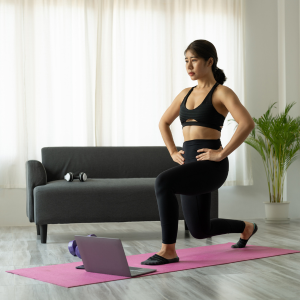
Signs You’re Ready to Begin Exercising Again
Even if your doctor gives you the all-clear, it’s important to check in with yourself. Every new mom heals at her own pace, and your body will tell you when it’s ready. The key is to start your postpartum workout journey with awareness and patience—not pressure.
🌿 Here Are Clear Signs You’re Ready:
✅ 1. You’re No Longer Bleeding
Postpartum bleeding (lochia) can last 4–6 weeks. If you’re still bleeding heavily, it’s a sign your body is still recovering. Wait until it tapers off before starting any physical activity.
✅ 2. Your Energy Is Slowly Returning
You don’t need to feel 100% energetic, but if you’re starting to feel less exhausted and more mobile, that’s a good sign your body is ready for gentle movement.
✅ 3. You’re Pain-Free During Basic Movements
If everyday actions like walking, climbing stairs, sitting down, or lifting your baby feel comfortable and pain-free, you’re likely ready to introduce light exercises.
✅ 4. You Feel Mentally Prepared
Postpartum workouts are not just physical—they’re emotional too. If you feel mentally ready, motivated, and curious to move your body again, that’s a positive indicator.
✅ 5. Your Core Feels More Stable
If you don’t feel “wobbly” or weak in the middle while standing, walking, or lifting, your deep core muscles are starting to engage again—which is essential for safe workouts.
✅ 6. Your Doctor Has Given You Medical Clearance
This is non-negotiable. Even if you feel great, wait until your postpartum check-up (typically around 6 weeks) and get official approval to start exercising again.
✅ 7. Your C-Section Incision (if applicable) Has Healed
If you had a C-section, the incision should be fully closed, pain-free, and not red, swollen, or leaking. No ab workouts should begin until you’ve been cleared and healed.
15 Best Postpartum Workouts for Healing and Strength
Once your body has healed and you’re cleared by your doctor, you can slowly begin to build a postpartum workout routine that helps you regain strength, improve mobility, and feel more like yourself. These exercises are low-impact, effective, and safe for most new moms in the early postpartum weeks.
Let’s explore the 15 best postpartum workouts that gently support your recovery:
1. Pelvic Floor Exercises (Kegels)
- Strengthens the pelvic floor muscles that support your bladder, uterus, and rectum.
- Helps prevent urinary leaks and prolapse.
- How to: Squeeze the muscles you’d use to stop urinating. Hold for 5 seconds. Release. Repeat 10–15 times, 3 times a day.
2. Diaphragmatic (Deep Belly) Breathing
- Reconnects your core and calms your nervous system.
- Reduces abdominal pressure and promotes healing.
- How to: Inhale through your nose, expanding your belly. Exhale slowly and pull your belly button inward. Repeat for 5–10 breaths.
3. Pelvic Tilts
- Helps activate your deep abdominal muscles and eases lower back pain.
- How to: Lie on your back, knees bent. Gently tilt your pelvis so your lower back presses into the floor. Hold 3 seconds. Repeat 10–15 times.
4. Heel Slides
- Strengthens the core while improving hip mobility.
- How to: Lie down, knees bent. Slowly slide one heel away from your body, keeping your core engaged. Return and switch. Do 10 reps per leg.
5. Glute Bridges
- Targets your glutes and pelvic floor while stabilizing your core.
- How to: Lie on your back, knees bent. Lift your hips slowly while squeezing your glutes. Hold for 3–5 seconds. Lower down. Repeat 10–12 times.
6. Bird-Dog
- A safe, early core stabilizer that improves balance and coordination.
- How to: On hands and knees, extend opposite arm and leg. Hold for 5 seconds. Alternate sides. Do 10–12 reps per side.
7. Standing Wall Push-Ups
- Builds upper body strength gently without pressure on your core.
- How to: Stand facing a wall. Place your hands shoulder-width apart and lower your chest toward the wall. Push back. Repeat 10–15 times.
8. Seated Core Contractions
- Activates your deep abdominal muscles without strain.
- How to: Sit tall. Inhale, expand belly. Exhale and gently pull your belly inward. Hold 5 seconds. Repeat 10–15 times.
9. Marching in Place
- Low-impact cardio to increase circulation and warm up muscles.
- How to: March in place for 2–5 minutes, lifting knees comfortably.
10. Babywearing Squats
- Strengthens your legs and glutes while bonding with your baby.
- How to: Wear your baby securely. Stand tall. Lower into a squat, then rise. Keep back straight. Repeat 10–12 times.
11. Side-Lying Leg Lifts
- Tone thighs and stabilize hips.
- How to: Lie on your side, legs stacked. Slowly lift top leg. Lower with control. Do 10–15 reps per leg.
12. Walking
- One of the best postpartum workouts for mental and physical health.
- Improves circulation, supports fat loss, and boosts mood.
- How to: Start with 10–15 minutes a day. Build up as you gain energy.
13. Cat-Cow Stretch
- Relieves tension in the spine and improves core engagement.
- How to: On hands and knees, arch your back (cow), then round it (cat). Repeat slowly for 1–2 minutes.
14. Wall Sits
- Builds endurance in legs and core without straining your abdomen.
- How to: Lean against a wall and slide down until knees are bent at 90°. Hold 15–30 seconds. Repeat 2–3 times.
15. Postnatal Yoga or Stretching
- Improves flexibility, reduces stress, and helps your body unwind.
- Focus on gentle poses that open the hips, chest, and spine.
Tips Before You Begin:
- Start with 5–10 minutes a day, then slowly increase.
- Breathe deeply and focus on form over speed.
- Avoid crunches or planks early on (especially if you have diastasis recti).
- Stop if you feel pain, heaviness, or bleeding.
Weekly Postpartum Workouts Plan (0–12 Weeks)
Creating a structured yet flexible postpartum workout plan can help you stay consistent without feeling overwhelmed. This week-by-week guide gently rebuilds strength, improves energy, and supports safe recovery.
Note: Always get medical clearance before starting. Stop if you feel pain, pressure, or bleeding.
🗓️ Weeks 0–2: Rest & Gentle Recovery
Focus On: Deep breathing, Kegels, short walks (as tolerated), shoulder rolls and light stretches
Duration: 5–10 minutes, 1–2 times a day
🗓️ Weeks 3–4: Light Movement & Core Awareness
Add: Pelvic tilts, heel slides, seated core contractions, neck/back/hip stretches
Duration: 10–15 minutes, 3–4 times a week
🗓️ Weeks 5–6: Mobility & Strength Basics
Add: Glute bridges, wall push-ups, cat-cow, marching in place
Duration: 15–20 minutes, 4–5 times a week
Walk: 15–30 minutes daily
🗓️ Weeks 7–8: Core + Lower Body Focus
Add: Wall sits, side-lying leg lifts, bird-dog, babywearing squats
Duration: 20–25 minutes, 4–5 days a week
Walk: 30 minutes daily
🗓️ Weeks 9–10: Balanced Strength & Endurance
Add: Light dumbbells, standing yoga, low-impact cardio
Duration: 25–30 minutes, 5 days a week
Walk/Cardio: 30–45 minutes, 5–6 days a week
🗓️ Weeks 11–12: Total Body Conditioning
Add: Full-body circuits, postnatal yoga or Pilates, gentle jogging (if cleared)
Duration: 30–40 minutes, 5–6 days a week
Cardio & Strength Mix
🧘 Bonus Tips:
Take 1–2 rest days weekly. Stay hydrated, especially if breastfeeding. Listen to your body and adjust as needed. Progress, not perfection.
Tips to Stay Consistent with Postpartum Workouts
Staying consistent with your postpartum workout routine can be challenging with a newborn in your arms and little sleep. But with the right mindset and a few smart strategies, you can stay motivated and make fitness a regular part of your healing journey.
✅ 1. Set Realistic Goals
Start small. Aim for 10–15 minutes a day instead of hour-long sessions. Focus on how you feel rather than how you look.
✅ 2. Create a Flexible Routine
Your schedule will vary daily, so don’t aim for perfection. Create short movement windows—morning stretch, mid-day walk, or evening yoga. If baby naps, you move.
✅ 3. Include Your Baby
Use your baby as your workout buddy! Try babywearing squats, stroller walks, or tummy-time stretches side-by-side. It adds bonding and fun to your routine.
✅ 4. Use Reminders
Set gentle alarms or notes around the house: “Stretch for 5 mins” or “Breathe and reset.” These small prompts build consistency.
✅ 5. Track Your Progress
Keep a simple notebook or use a fitness app. Log how many minutes you moved, what felt good, or any small win. Seeing progress builds momentum.
✅ 6. Celebrate Small Wins
Did you do 3 glute bridges today? Amazing. Walked around the block? That counts. Celebrate effort, not perfection.
✅ 7. Join a Postpartum Community
Connect with other moms online or locally who are also working on postpartum wellness. Support helps you stay accountable and motivated.
✅ 8. Focus on Feeling Better, Not Losing Weight
The scale is not your goal—your energy, strength, and confidence are. Let fitness support your mental and physical health, not define your worth.
✅ 9. Keep Your Workout Space Ready
Lay out your mat, keep a water bottle close, and store resistance bands or light weights where you can see them. Make it easy to say yes.
✅ 10. Give Yourself Grace
Some days you’ll move. Some days you won’t. Both are okay. Progress in Postpartum Workouts is not linear—and you’re still doing a great job.
Common Mistakes New Moms Should Avoid in Postpartum Workouts
Starting a postpartum workout routine is a positive step—but doing it the wrong way can slow your recovery or even cause harm. Here are some common mistakes to avoid so your fitness journey stays safe, effective, and encouraging.
❌ 1. Starting Too Soon
Jumping into exercise before your body is ready can lead to bleeding, pain, or injury. Always wait for medical clearance, especially after a C-section or complicated delivery.
❌ 2. Ignoring Pelvic Floor Health
Skipping pelvic floor exercises like Kegels or doing high-impact workouts too early can cause long-term issues like incontinence or pelvic organ prolapse.
❌ 3. Doing Traditional Ab Exercises Too Early
Crunches, sit-ups, and full planks can worsen diastasis recti (abdominal separation). Focus on core-safe moves like heel slides, pelvic tilts, and breathing work first.
❌ 4. Comparing Your Progress to Others
Every woman heals differently. Comparing your body or routine to another mom’s can damage your confidence. Your pace is the right pace.
❌ 5. Focusing Only on Weight Loss
Postpartum fitness is about healing, energy, and strength—not shrinking. Fat loss will come naturally when your body is fully supported.
❌ 6. Overtraining or Skipping Rest Days
Rest and recovery are essential. Working out daily without rest can lead to burnout, fatigue, and injury. Listen to your body and rest when needed.
❌ 7. Poor Posture During Exercises
Slouching or arching your back can make exercises ineffective or unsafe. Always check your form—especially during core work and lifting.
❌ 8. Forgetting to Breathe Properly
Holding your breath during movement puts pressure on your core and pelvic floor. Exhale during effort, and inhale during relaxation.
❌ 9. Not Staying Hydrated or Nourished
Especially if you’re breastfeeding, your body needs extra fluids and calories. Dehydration can cause fatigue, cramps, and low milk supply.
❌ 10. Giving Up Too Soon
You won’t see results overnight—but don’t quit. Every walk, stretch, and squat is progress. Stay consistent and trust the process.
Avoiding these mistakes ensures your postpartum workout plan supports healing, confidence, and long-term strength.
Conclusion
Postpartum recovery isn’t a race—it’s a process of healing, rebuilding, and learning to trust your body again. The 15 postpartum workouts shared above are simple, safe, and designed to support you through each stage of recovery. Whether you have five minutes or thirty, showing up for yourself matters.
Remember, every stretch, breath, and movement is progress. Be patient, be kind to yourself, and celebrate the small wins. Your body just created life—now it deserves love, strength, and care in return.

